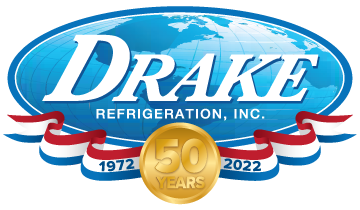
Chiller uptime is essential for MRIs and other imaging machines because it provides consistent, uninterrupted patient care and revenue streams. So, how can you keep your processes going strong? As experts with a proven 99.4% chiller uptime rate, we’ve compiled our top five essential tips for maximizing your medical chiller’s uptime.
Our medical chiller uptime-boosting tips include:
- Install a high-performance industrial-grade system
- Ensure the chiller is manufactured to reduce refrigerant leaks
- Follow routine maintenance protocols
- Consider city water changeover panels
- Optimize your controls
Are you ready to maximize your medical chiller’s uptime rate? Continue reading to learn more about these helpful hints.
Install a high-performance industrial-grade system
First thing’s first. Maximizing medical chiller uptime starts with installing the right system. A high-performance industrial-grade system is already equipped with the uptime-enhancing features you need to keep your equipment running, including tight temperature control, year-round performance, redundant circuits, and other backup systems. Unlike comfort chillers that can’t hold up to the rigorous demands of MRI and other imaging equipment, industrial-grade chillers have what it takes to keep going.
Ensure the chiller is manufactured to reduce refrigerant leaks
Next, consider how your medical chiller is manufactured. Specifically, has the system manufacturer gone the extra mile to catch the possible leaks that can slow you down even before the chiller leaves its production floor? As manufacturing pros skilled in detecting leak-causing vulnerabilities, we use the following techniques during our manufacturing process:
- System brazing
- Nitrogen leak detection
- Helium leak detection
- Final leak detection
Visit our blog to learn more about the processes involved in each of these refrigerant leak-prevention steps and how they enhance the uptime rate.
Follow routine maintenance protocols
Maximizing MRI chiller uptime also depends on maintaining your system according to the manufacturer’s guidelines. Staying on top of daily, quarterly, and annual maintenance checklists can help you detect any possible downtime-causing issues before they take your system down.
How does your maintenance routine stack up to industry standards? Check out our article on the type of maintenance a chiller needs.
Consider city water changeover panels
Another way to maximize medical chiller uptime is to anticipate problems before they begin. One solution is to consider integrating an automatic city water changeover panel containing four water solenoids, including two for normal chiller operation (NC) and two for city water operation (NO). This option automatically switches fluid access from the chiller to city water in case of an alarm for uninterrupted process cooling that reduces downtime.
Optimize your controls
Medical chiller controls can help you detect downtime-causing issues before they happen, often right from your fingertips. For instance, MCS micro-controllers offer tighter process control and remote login access, allowing you to check the status of your system from anywhere. Email and text alerts also help keep you updated on errors that could affect your system’s uptime.
What happens when your system goes down?
We’ve spent decades perfecting our after-the-sale technical support to provide expert attention when you need it most. If your Drake medical chiller system goes down any time, anywhere, our team will be there for you during the entire lifecycle of the chiller. Our dedicated tech support provides over-the-phone support with remote login capabilities, working with on-site technicians to quickly diagnose and resolve chiller systems.
Maximizing your medical chiller’s uptime is the number one way to ensure you can scan when patients need it, enhancing your level of care and operational profitability. Trust our 50 years of experience and a proven 99.4% uptime rate to deliver performance and peace of mind. Reach out to request a quote for your medical chiller today.

